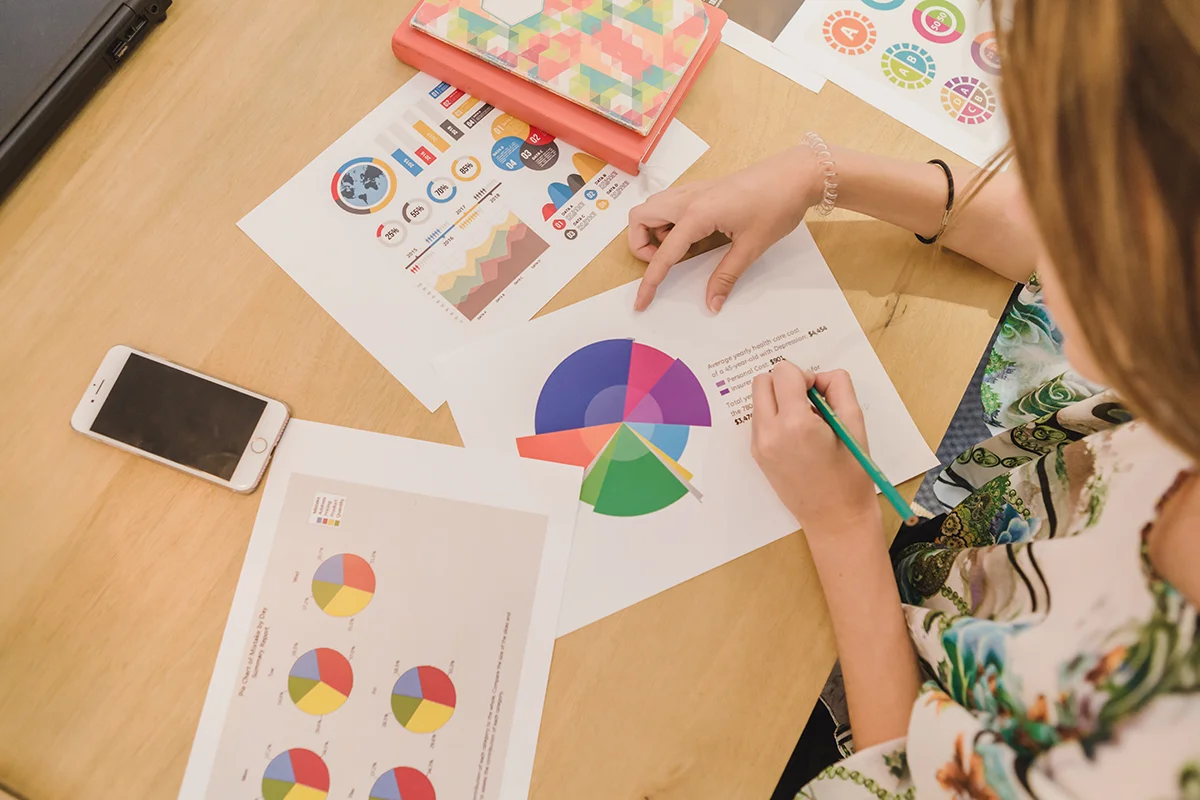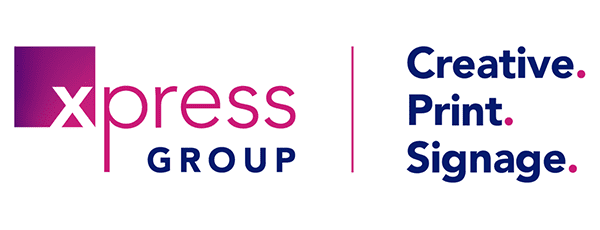
24 Apr Exploring the Future of Printing: Trends and Innovations
What are the Biggest Trends in Printing in 2024?
The big thing about almost everything in life is that it’s constantly changing.
Change comes about for many reasons: a shift in the cultural landscape, technological advancements, developments in user preferences, and so on.
Not least, we see continuous new trends in the world of marketing.
Specifically, printing.
What’s of the moment and everywhere one year can quickly become passé and pass into forgotten obscurity. If you recall the all-too-brief trend for those small, floppy disk business cards followed by CD versions (that didn’t work), you’ll know what we mean.
So, although we’re nearly into May 2024, it’s worth taking a breath and a slight pause. Let’s reflect on where the printing sector is now and the trends that currently impact it. In addition, we’ll explain how these new styles will, or could moderate in the coming years.
Dominated by Digital
We live and work in an era wholly governed by digital advancements. Most of us are online, in some way, most of the time – for work, leisure, news, daily living – almost everything. However, the following has become somewhat of a mantra with Xpress Group:
The demise of the print sector has been exaggerated.
We know it, we see it and experience it.
As we move further into the 21st century, while undoubtedly different, and in flux, the print industry is still highly relevant.
It appears that, as sensory beings, we still prefer tangible things. Excellent examples are brochures, business cards, flyers, and leaflets. However, this sector is poised for innovation, with transformations and trends that promise to make our lives simpler, quicker, easier, and more affordable. Like all vibrant industries, printing continues to adapt and evolve to meet the changing needs of businesses and consumers.
Innovation is essential. This article explores the key trends of 2024 shaping the landscape of the print industry.
What’s at the top of the list?
1. Sustainability
Sustainability was always going to come first.
Printing comes under the spotlight when we examine industrial production processes – for obvious reasons. Traditionally, this sector sucked up resources and materials, had a significant carbon footprint and generated waste. Office workers, for example, get through an enormous amount of paper.
Therefore, eco-friendly printing has been topping everyone’s agenda for some time.
And, with a degree of success.
Greener initiatives involving environmentally friendly inks, recycled paper and energy-efficient printing processes will continue to be front and centre of conscious consumers’ minds. Reducing ecological damage helps, quite literally, to save our planet. From a commercial, PR perspective, it’s also likely to enhance a company’s reputation.
Therefore, throughout 2024, Xpress Group predicts an increased emphasis on eco-friendly practices. Printing businesses will ignore the green agenda at their peril.
2. Augmented Reality and AI Integration
This impressive innovation is tomorrow’s technology today.
What is it?
In brief, it bridges the gap between our “real” and “digital” worlds. Here, print materials move from a traditional static nature into augmented reality. If you can imagine an immersive experience, you’re not far wrong.
How does it work? Here’s an example: on packaging, in a magazine or brochure, a simple smartphone scan enables you to “see” products come to life – perhaps interactive content or videos – in vibrant, realistic 3-D.
Game-changing brand owners are seizing this opportunity to deliver the “wow” factor for what marketing experts would call an exciting user experience. It’s new, and it’s ultra-exciting. As a revolutionary new “layer”, AR could make everyday life more engaging and memorable.
A megatrend for 2024? We shall see.
3. Artificial Intelligence
AI.
The “love to hate” concept of the moment. Or, for others, their go-to tool for streamlining all sorts of mundane tasks. Which side are you on?
Another question:
What could it mean in the world of printing? As it happens, quite a lot.
Consider workflow optimisation, for example. AI-driven management tools can simplify the entire print production process.
Integrated into software, from the first customer enquiry to the finished product, there is an automatic checking process, a way to monitor processes, and an inventory management tool. The results? Less machine downtime, cost savings and increased efficiency. At least, that’s the theory.
We will watch this space.
Also, AI-powered analytics tools are whizzes at planning. By analysing historical customer data, sales trends, etc., they can predict what types of printed materials will likely be in demand. Thus, there’s less waste and time and cost savings. Plus, we’re back to being greener as carbon footprints can be reduced.
Finally, quality control. Imperfections, printing errors and colour deviations can be spotted and corrected in real time. It’s all about the QS, and cuts down on waste, too.
4. Smart Features and Smart Packaging Designs
In 2024, print appears to be moving from the passive to the much more active. From static to dynamic; from still to moving.
You’re most likely familiar with QR (quick-response) codes: pointing your camera phone at a small black-and-white pattern on a printed design to “go” somewhere, such as a website page.
Here, we’re also considering Near-Field Communication (NFC) technology. This latter enables users to make safe, secure transactions, exchange digital content, and connect electronic devices with just a touch. The person with whom you are connecting needs to be close by, but this will no doubt change.
How does this work in printing? It’s easy.
If your device has NFC technology built into it — and many do — just select the file you want to print, walk over to the printer, and hold your device on the NFC printer for a few seconds. The dedicated app will open. Then voilà, your fuss-free printed document is in front of you.
5. 3-D Printing
3-D printing seems astonishing, and in many ways, it most certainly is.
In 2024 and in the near to medium future, there will unquestionably be further advancements to refine this ground-breaking manufacturing process.
What is 3-D printing? Let us offer you this simple walk-though:
It’s an additive way to create and build a physical object from a digital design. This works by laying down thin layers of material in the form of liquid or powdered plastic, metal or cement, then fusing the layers to produce a tangible 3-D result. It’s exceptionally clever, and allows the user to make complicated shapes using less material than traditional manufacturing methods.
Currently, industries can use 3-D printing to produce prototypes and while it’s still too slow to be used in the mass market, the technology is still massively evolving.
Is it genuinely printing, though? Probably, not as Xpress Group nor our clients would see it, but as a constantly developing sector, the print industry recognises its potential to create intricate, tailored products, including bespoke packaging designs.
An intriguing concept.
And, a trend to keep a close eye on.
Other Trends in 2024
Two more pioneering printing concepts out there this year:
Printed merchandise. Otherwise known colloquially as “merch”, it’s so much more than a promotional giveaway. Merchandise has moved into marketing tool territory. Branded clothing and customised, limited-edition products are making their way into the mainstream while creating a sense of exclusivity among customers.
Personalised print marketing. The rise of digital marketing, print on demand, and smaller print runs has empowered brands to become more specialised than they were formerly. The personal, customised touch is an ideal way to target a particular demographic, thus making everything more relevant and appealing.
What Xpress Group Thinks
In 2024, we firmly believe printing and printed materials are more important and in demand than ever. As a business, we’ve adapted to our customers’ needs by driving innovation where and when we can.
In a digital age, it is critical to remain relevant and as much as possible ahead of the curve.
We’ll no doubt revisit this concept next year to polish our crystal ball.
In the meantime, the future of printed collateral looks exciting for our clients, and with each new year comes the promise of change – in a good way.
